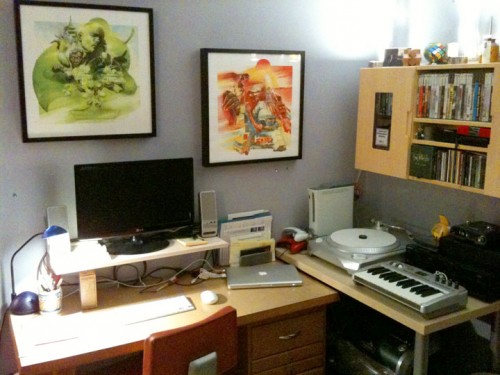I’ve assembled a lot of IKEA furniture in my life, and along the way I’ve learned a few things, such as:
- Every piece of IKEA furniture comes with an identical Allen wrench, which you will only ever use to assemble that piece of furniture, and which will forever after gather dust in a drawer in your basement with all of the other identical Allen wrenches you’ve acquired at IKEA.
- A lot of stuff that looks like wood is actually a woodgrain pattern printed on plastic-coated paper, wrapped around a block of glued-together sawdust.
- Every piece of IKEA furniture will take two hours to assemble, no matter how large or small, or how many separate pieces it contains.
- Assembly might take slightly less time if you possess a Ph.D in archaeology with a special emphasis in either Egyptian or Mayan hieroglyphics.
- You will almost always realize 2/3 of the way through the process that you are doing it backwards.
- It never gets any easier.
Those universal hieroglyphic assembly instructions are, along with the ubiquitous Allen wrench and product names featuring umlauts or o’s with slashes through them, the most easily mocked symbol of IKEA. The pictures are often inscrutable, and the overall impression overwhelming. More than once I have felt compelled simply to curl up in the corner of the room and weep silently.
But written assembly instructions (from other companies, of course) are often far, far worse. If I can’t make sense of a diagram showing exactly how the parts fit together, how am I possibly supposed to understand written instructions along the lines of “insert the ball socket assembly into the reverse threaded wall mount bracket and affix with the supplied 8mm Torx screws and self-locking bushings”? (OK, I just made that up, but it sounds real, doesn’t it? Wait, what are you doing over there in the corner?)
And therein lies the problem: there is a great mental chasm between instructions and understanding. It doesn’t matter what form the instructions take: written, visual, verbal, semaphore. Whether you approach them in an unthinking, just-get-it-done, “paint by numbers” fashion, or you attempt to read and absorb them all before beginning, instructions can only communicate so much.
Recently I attempted to assemble and install a curtain wire system from IKEA, for the purpose of hanging posters from bulldog clips at the new Room 34 studio. The instructions supplied with the curtain wire were some of the most panic-inducing I’ve ever seen from IKEA, and that’s saying something.

The first two times I tried to put this thing together, I just gave up. Then I decided not even to bother with the instructions. Instead, I closely examined the various parts, until I came to my own understanding of how they fit together, and how it all attached to the wall. From that point, I was able to refer back to the instructions in a new way, as a reminder of my own thought processes, rather than as a bizarre alien communication from some distant Hömwørld.
I’ve been in IKEA’s shoes, though. Not literally. I don’t think they sell shoes, although I have seen fuzzy slippers there in a big wire bin for 99 cents a pair. But I have had to prepare instructions myself, and to lead training sessions where I attempt to communicate to my clients how to use web applications I have developed for them. It’s a challenge.
How much information is too much; how much is too little? What is the right information to convey, and what can they do without? Is it better to provide a broad foundation of knowledge or a targeted “cheat sheet” of most commonly used tasks? How do I stop instructing people and help them to understand?
I don’t have the answers. I’m still exploring. In my own experience, it’s direct, hands-on activities that are directly applicable to solving real-world problems that best allow me to develop my own unique understanding of how a system works. But it can be incredibly difficult and time-consuming as an instructor to develop suitable training materials and create an environment where that type of learning can take place.



